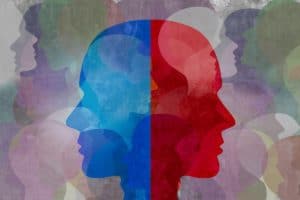
The famous and often mysterious Manhattan Project brought many great minds together to create a catastrophe.
The project began in 1942, beginning with the Einstein, Lei Szilard and Eugene Wigner warning the United States
of Nazi danger. This race to create the atomic bomb was imminent, and the scientific minds in charge did all
they could to outpace the Axis powers. Ultimately, the Allies won, but the use of the bomb was put into question.
The number of manpower, however, stretched far beyond the big names, the US government having employed
thousands of people to become a part of this project. However, there were some big names involved who even got their names known because of it. I’m going to be listing the 10 amazing scientists of the
Manhattan Project.
—
The 10 Amazing Scientists of the Manhattan Project
—
1. J. Robert Oppenheimer

Robert Oppenheimer was an American theoretical physicist born in New York City in 1904. Oppenheimer was a science administrator and director of the Los Alamos Laboratory between 1943-45 during the development of the atomic bomb. He Was also director of the Institute for Advanced Study at Princeton University for 20 years,
until his death. Strangely enough, accusations of disloyalty led to a government hearing, resulting in
the loss of his privileges, including his security clearance and advisory position in the US government.
—
Excelling in physics and chemistry in college, he went off to the Cavendish Laboratory at Cambridge University in England and collaborated with the British scientific community to help advance atomic research. In 1927, he received his doctorate after having met Max Born in Germany, meeting other pioneering physicists like Niels Bohr, and he later
went on to teach physics in California. He later on devoted much of his time to quantum theory, and later found
at in interest in politics after Hitler rose to power.
—
He would later side with the Republic during the Spanish Civil War, making acquaintance with many communists,
but he later withdrew funding he had been giving after finding out about Joseph Stalin, his communism, and his
ill treatment of Russian scientists. Later on, Oppenheimer became leader of the project that would help them
face the Nazis, considering the dangers of Nazi power with a nuclear bomb, especially after the invasion of
Poland. Starting in 1942, Oppenheimer led a laboratory, after the US Army had become in charge of organizing
the Manhattan project.
—
Oppenheimer would later be accused of working with the Russians, and the first nuclear blast occurred on July 16th,
1945 in New Mexico, but it was after the surrender of Germany. He would later end up as head of the Institute
for Advanced Study, serving as chairman of the General Advisory Committee of the Atomic Energy Commission. He
was later accused of working for the Russians but found not guilty, being made into a martyr after the witch hunt.
He later died of throat cancer in 1966, shortly after receiving the Enrico Fermi Award of the Atomic Energy Commission.
—
2. Enrico Fermi
Enrico Fermi was an Italian-American scientist born in Rome, Italy in 1901. Fermi was a chief architect of the
nuclear age, and he developed the mathematical statistics that would clarify subatomic phenomena. He explored
nuclear transformations caused by neutrons and directed the first controlled chain reaction involving nuclear
fission. Enrico was awarded the 1939 Nobel Prize for Physics. The Enrico Fermi Award was given in his honor,
as well as Fermilab, which is the National Accelerator Laboratory. An element, known as Fermium, was given
his namesake.
—
Fermi would later on become involved in the Manhattan Project, after having spent time being a mathematical
physicist. Fermi moved to American, became a professor at Columbia University, and started working on nuclear
arrangement. Later on he moved between Chicago and later moved to Los Alamos, after having spent years compiling
research pertaining to nuclear fission. He later became an associate director, running one of the division involved
during the project, helping understand the bomb’s explosive energy after it had detonated. He later accepted a
permanent position in Chicago and helped with further fission weapons to help fight the Soviets until his
death in 1954.
—
The 10 Amazing Scientists of the Manhattan Project
—
3. Leo Szilard
Leo Szilard was a Hungarian-American physicist born in Budapest, Hungary in 1898. Szilard is known for helping
conduct the first sustained nuclear chain reaction, later becoming instrumental in helping initiate the
Manhattan Project. After receiving his degree from the University of Berlin in 1922, he joined the staff of the
Institute of Theoretical Physics. The Nazis game into power 11 years later, so he left for Vienna then London
before settling in the United States, teaching at Columbia University.
—
In 1939, Szilard, along with Eugene Wigner and Albert Einstein, alerted the US government of the potential
creation of an atomic bomb. He is famously known for drafting the letter to President Franklin. D Roosevelt
that advocated for the immediate development of an atomic bomb. Starting in 1942, he conducted nuclear research
at the University of Chicago, helping Enrico Fermi construct the first nuclear reactor. He would later become
professor of biophysics at the University of Chicago, later becoming a supporter of peaceful atomic energy.
—
4. Niels Bohr
Niels Bohr was a Danish physicist born Copenhagen, Denmark in 1885. Bohr is known as being one of the foremost
pioneers of physics of the 20th century. He was the first to apply quantum concept, and he even earned the Nobel
Prize for Physics in 1922 for it. He is well known for having a broad influence, inside and outside of physics. He
would end up receiving his doctorate in 1911 after having gone to the University of Copenhagen.
—
Bohr went on to become famous for his atomic model, later establishing an Institute for Theoretical Physics
at Copenhagen University. He ended up earning his Nobel Prize, and before long, became known for his Copenhagen Interpretation, got caught up in nuclear physics, and helped with the discovery of splitting an atom. As Nazis came to power, he helped many of his Jewish colleagues who lost their jobs before ultimately becoming entangled in the Manhattan Project. He became deeply embroiled, but had an unwavering resolve in helping the Allies, and he joined the British and Americans create the bomb, being convinced by John Chadwick.
—
The 10 Amazing Scientists of the Manhattan Project
—
5. Richard Feynman
Richard Feynman was an American physicist born in New York City in 1918. He is widely considered the most
influential physicist of the post-World War 2 era. Feynman was even awarded the Nobel Prize for Physics in 1965
for his contributions to science. After studying physics at MIT, he went to Princeton University and earned his
doctorate in 1942 before getting scientifically involved during World War 2.
—
Feynman was recruited to serve as a staff member at the US atomic bomb project at Princeton University before
later getting more closely involved in Los Alamos. He became the youngest group leader of the theoretical division
of the Manhattan Project. He helped devise the formula for predicting the energy yield of a nuclear explosive and
took charge of the project’s computing effort. He felt both euphoria and anxiety after the bomb demonstration,
and he later became professor at Caltech and created several important contributions to modern physics, including
his Feynman diagrams.
—
6. Glenn T. Seaborg
Glenn T. Seaborg was an American nuclear chemist born in Ishpeming, Michigan in 1912. He is best known for his
work on isolating and identifying transuranium elements. He ended up sharing the 1951 Nobel Prize for Chemistry
with Edwin Mattison McMillan for their independent discoveries of transuranium elements, elements heavier than
uranium. He even had an element named after him called Seaborgium.
—
Seaborg, after earning his degree, worked on isolating radioactive isotopes, later become a professor in 1946.
He later got sucked into the Manhattan Project, being section chief at the University of Chicago Metallurgical Laboratory during World War 2. His responsibility was to isolate plutonium from the reaction products and scaling up the extraction. He later went on to discover several other elements, including americium.
—
The 10 Amazing Scientists of the Manhattan Project
—
7. Eugene Wigner
Eugene Wigner was a Hungarian-American physicist born in Budapest, Hungary in 1902. Wigner was a joint winner
of the Nobel Prize for Physics in 1963. He is famously known for many contributions, including his formulations
of the law of conservation of parity. Studying chemical engineering and receiving a PhD in Berlin, he went on
to teach and eventually ended up in the United States. Most of his time was spent at Princeton University,
serving as professor of mathematical physics.
—
Later on, during World War 2, Wigner, along with Szilard and Einstein, sent a letter to Franklin D. Roosevelt
to initiate the atomic-bomb project. During his time in the project, he was at the Metallurgical Laboratory,
helping Enrico Fermi construct the first atomic pile. Wigner was also conducting research on quantum mechanics.
8. Hans Bethe
Hans Bethe was a German-American theoretical physicist born in Strassburg, Germany in 1906. Bethe is known
for his contributions to quantum physics and an understanding of the atomic processes of atomic nuclei. He
later received the Nobel Prize for Physics in 1967 for his work on the production of energy in stars and
for advocating social responsibility in science.
—
Hans worked his way through college, being recognized as a bright young lad, eventually going to Cambridge
and the University of Rome, working with Enrico Fermi. When the Nazis rolled around in 1933, he was dismissed
because of his partial Jewish heritage, being invited to England and eventually moving to the US. He went
through the motions, becoming somewhat of a political physicist during a time of great growth in physics in
the US. He then worked on radar at MIT before joining the Manhattan Project, helping create designs of the
uranium and plutonium atomic bombs.
—
The 10 Amazing Scientists of the Manhattan Project
—
9. Ernest O. Lawrence
Ernest Oliver Lawrence was an American physicist born in Canton, South Dakota in 1901. He is famously
known for creating the cyclotron, the first particle accelerator to achieve high energies, and earning
the Nobel Prize for Physics in 1939. After earning his doctorate in physics at Yale, he became an assistant
professor before going to Berkeley as associate and full professor.
—
His cyclotrons produced technetium, an artificially made element, being the first of it’s kind. Later on,
during World War 2, he worked with the Manhattan Project as program chief in charge of developing the
electromagnetic process of separating uranium for the atomic bomb. He later on achieved the Fermi Award,
and patented and invented the color-television picture and earned an element named after him.
10. Lise Meitner
Lise Meitner was an Austrian-born physicist born in Vienna, Austria in 1878. She earned the Enrico Fermi
Award with other scientists for their joint research that led to discoveries of uranium fission. After
receiving her degree at the University of Vienna, she went on to research radioactivity. She later left
Nazi Germany, because of her Jewish heritage, to settle in Sweden.
—
She later helped term elucidated the physical characteristics that had been demonstrated when barium appears
in neutron-bombarded uranium. Along with her nephew Otto Frisch, proposed the term fission for the process and
later was later snubbed a chance at sharing a Nobel Prize for this discovery in 1944 when Otto Hahn had been
given credit for creating nuclear fission. Meitner was later given the change to join the Manhattan Project,
but she refused, thinking that it was unethical. She deserves to be on the list for being on the few pioneering
women involved, and she was offered the chance, let alone her work on fission.





Recent Comments